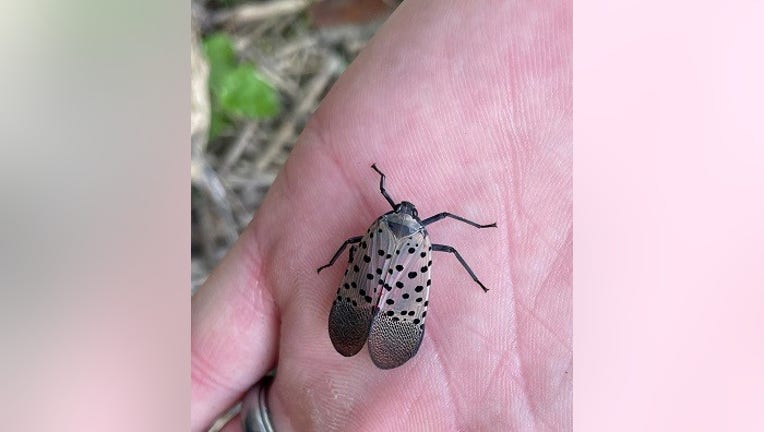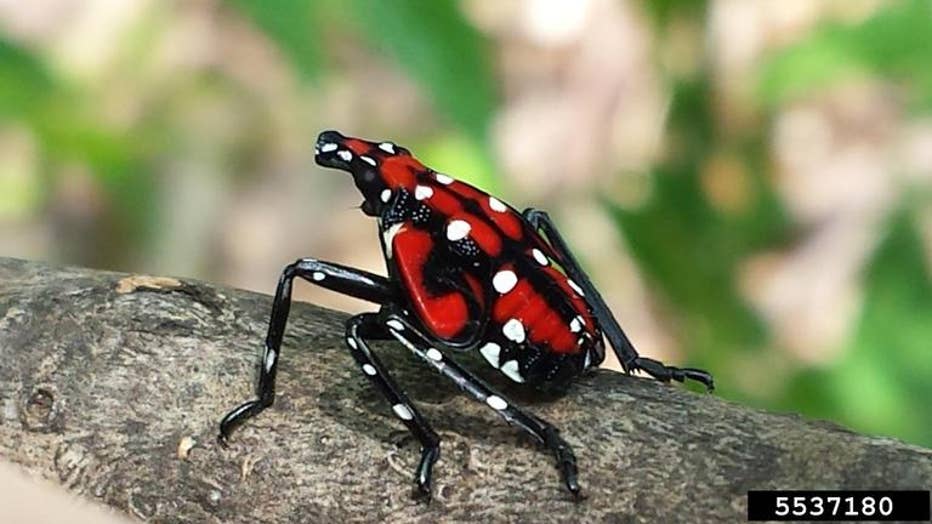Spotted Lanternfly sightings most common during late summer, early fall

(FOX 2) - Late summer and early fall is the most likely season that spotted lanternfly could be sighted in Michigan. If anyone in the state does spy one of these invasive critters, wildlife specialists have a simple request: squish it.
And after that, take a photo of the bug and pass it along to the state's invasive species tracker.
"We’ve heard reports of spotted lanternflies swarming New York City and covering beaches on the Jersey Shore. We’d like to prevent similar scenarios in Michigan," said Rob Miller, an invasive species specialist for the Michigan Department of Agriculture and Rural Development.
The lanternfly comes in many colors, with adults decorated in black spots with brown and gray shades. They also have a yellow and black abdomen and bright red hind wings.
The egg masses look like old chewing gum that is gray and has a waxy, putty-like coating. Nymphs are a quarter the size of adults and have black and white spots on their backs.

An immature Spotted Lanternfly. Photo courtesy: Lawrence Barringer, Pennsylvania Department of Agriculture, Bugwood.org
So far, only one colony has been identified in Michigan. The population was found on a county-owned parcel in Pontiac where it's being managed by teams from Oakland County, MDARD, Michigan State University, and the U.S. Department of Agriculture.
The concern is if spotted lanternfly becomes established they could wreak havoc on over 70 different plant species, including some important ones in Michigan like grape vines and hardwood trees.
MORE: Tahquamenon Falls ranked 2nd best place in U.S. to see fall leaves
The pests suck sap from host plants while secreting a sticky liquid called honeydew. It can mold and kill plants, while also attracting other pests like yellow jackets, flies, and ants. That could be a problem for growing crops in Michigan.
The pest travels by laying eggs on vehicles and equipment that moves from infested areas into new environments.
If someone snaps a photo of a spotted lanterfly, they should upload it to the Michigan Department of Natural Resources website here. Find more at www2.dnr.state.mi.us/ors/Survey/38

